Last year, more than 60% of sales on Amazon came from third-party sellers — most of which are small to medium-sized businesses. Based on Jungle Scout’s 2023 State of the Seller Report, we know that nearly all Amazon sellers have different methods of finding success on Amazon.
A key differentiator among Amazon sellers is the fulfillment method they choose: Fulfillment by Amazon (FBA) and/or Fulfillment by Merchant (FBM).
- What’s the difference between Amazon FBA and FBM?
- Which Amazon fulfillment method should sellers use?
- 7 factors to consider before choosing a fulfillment method on Amazon
- What are the key differences between FBA and FBM sellers?
Nearly all Amazon sellers (86%) sell using Amazon FBA, and over a third (37%) use Amazon FBM. Broken out, Amazon sellers sell:
- FBA only: 64%
- FBA and FBM: 15%
- FBM only: 22%
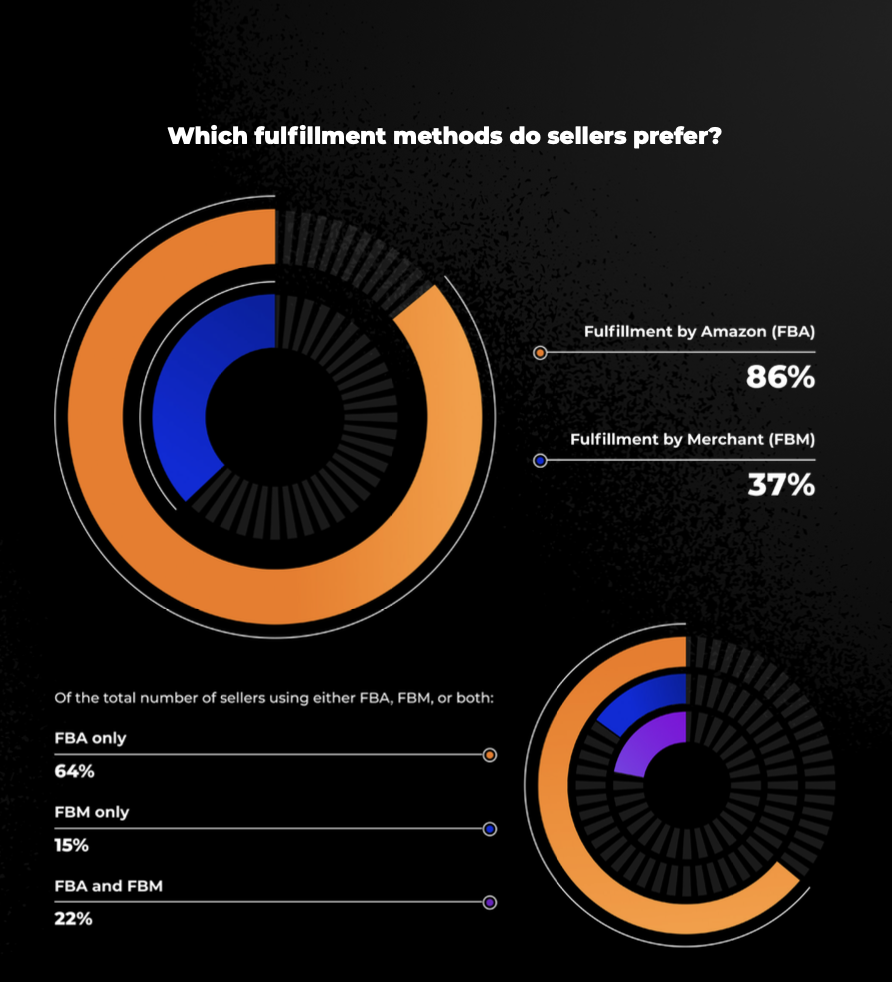
We’ll take a look at the primary differences between these two fulfillment methods — including which requires more experience and which is more profitable — as well as the factors you should consider when choosing whether to fulfill with Amazon FBA or FBM (or both!).
What’s the difference between Amazon FBA and FBM?
Here are the main differences between Amazon FBA and FBM:
- Fulfillment by Amazon (FBA): A fulfillment method on Amazon in which a seller (or a seller’s supplier) sends their products directly to Amazon’s fulfillment centers. Amazon then stores the inventory and handles the picking, packing, and shipping of all your orders — they’ll even handle customer service for orders fulfilled with FBA.
- Fulfillment by Merchant (FBM): A fulfillment method on Amazon in which a seller lists their products on Amazon, but manages all storage, shipping, and customer support themselves (or through a third-party fulfillment center).
Which Amazon fulfillment method should sellers use?
For both small businesses or at-home sellers to major brands with elaborate supply chains, all sorts of Amazon sellers can benefit from both Amazon FBA and FBM fulfillment methods. But how do you choose what’s right for your business?
There are seven major factors you should consider before you select a fulfillment method on Amazon.
- Size and weight of the product
- Control of customer experience
- Seller feedback
- Inventory turnover rate
- Logistics
- Expenses and fees
- Prime badge
Below, we’ll go into full detail on each of those factors, but first, is a quick overview of which fulfillment method you should use based on the 6 factors.
You should use FBM if…
- You want more control over your customers
- Excellent customer service practices are in place
- The products you sell are oversized or heavy
- You already have logistics in place
- You’re able to mitigate the expenses involved in fulfilling your own products
- Your inventory turns over slowly
You should use FBA if…
- The products you sell are small and lightweight
- You’re okay surrendering control to your customers to Amazon
- You want Amazon to handle your customer service
- Your inventory turns over quickly
- You do not have logistics in place
- Your expenses would be higher if you fulfilled your own products
Can Amazon sellers use both FBA and FBM fulfillment methods?
Yes. In fact, Jungle Scout’s data indicates that 22% of Amazon sellers sell both FBA and FBM.
If you have a large variety of products, you may consider using both to benefit from the two.
For example, imagine you sell two types of products. One product is oversized and turns over slowly. The second product is small and turns over quickly. To maximize your profits and minimize your expenses, you would use FBM to sell the large/slow-selling product and FBA to sell the small/fast-selling product.
You can also create an FBA and FBM offer for the same product under one ASIN. Some sellers do this in case their FBA inventory runs out but are still able to fulfill orders via FBM.
7 factors to consider before choosing a fulfillment method on Amazon
While FBA is an amazing service that most Amazon sellers take advantage of, it may not work for every product sold on the platform. Let’s go over the top 6 factors you should consider when choosing how to fulfill your products on Amazon.
1. Item size/weight
Amazon’s fee structure and logistics are beneficial to FBA sellers who have small, lightweight products that turnover (sell) quickly. Inversely, Amazon’s fees (specifically FBA fees and storage fees) are not conducive to selling oversized, heavy products.
To decide which fulfillment method works best for your product, you can use Amazon’s FBA revenue calculator to forecast fees and expenses.
Here’s an example of where FBM may make more sense for your business than FBA.Let’s say you are selling a non-inflatable kayak. Something of that size will take up a lot of space in Amazon’s fulfillment centers and be costly to ship. Assuming you have the space and capabilities to ship a kayak, it will likely be more profitable to ship an item of this size yourself.
Let’s use this product on Amazon as an example.
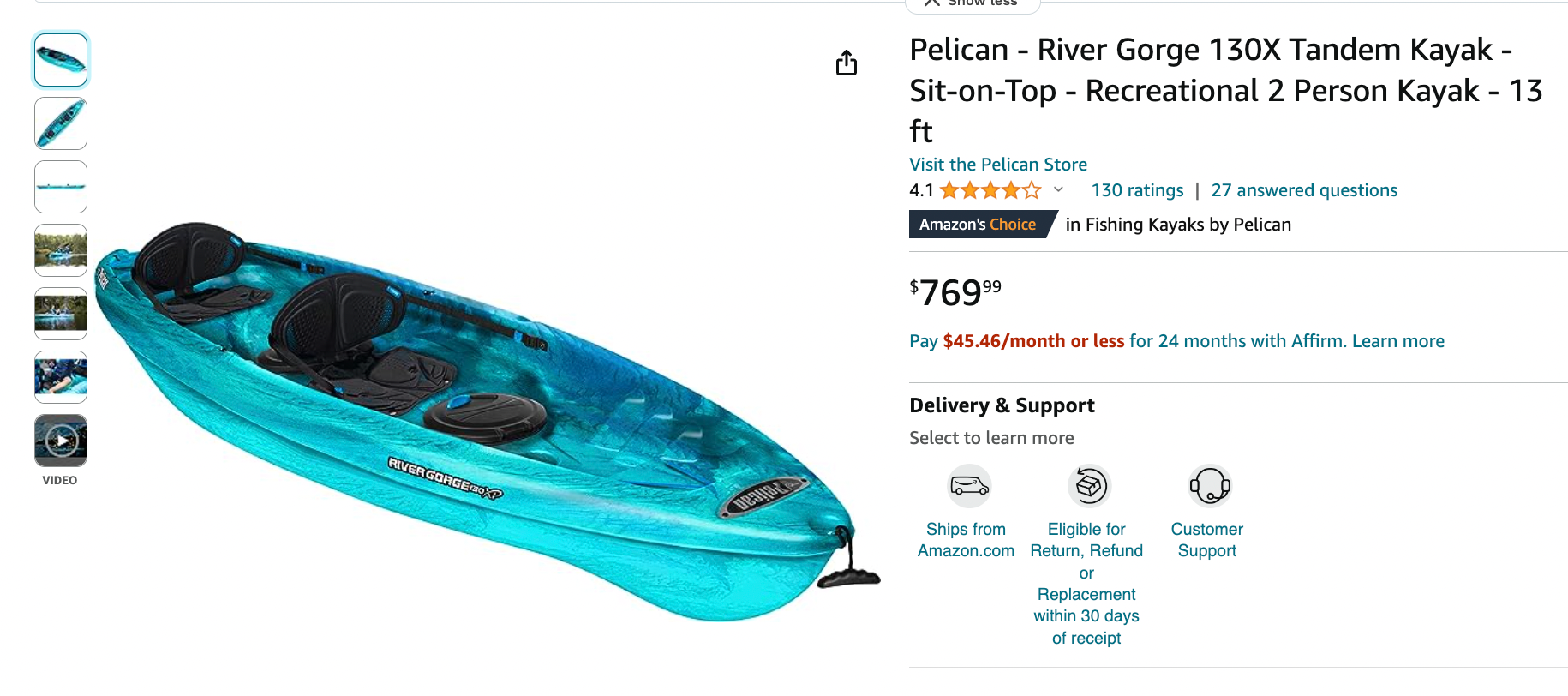
We’ll plug the ASIN of this product into the Amazon Revenue Calculator to get a breakdown of the fees for both FBA and FBM.
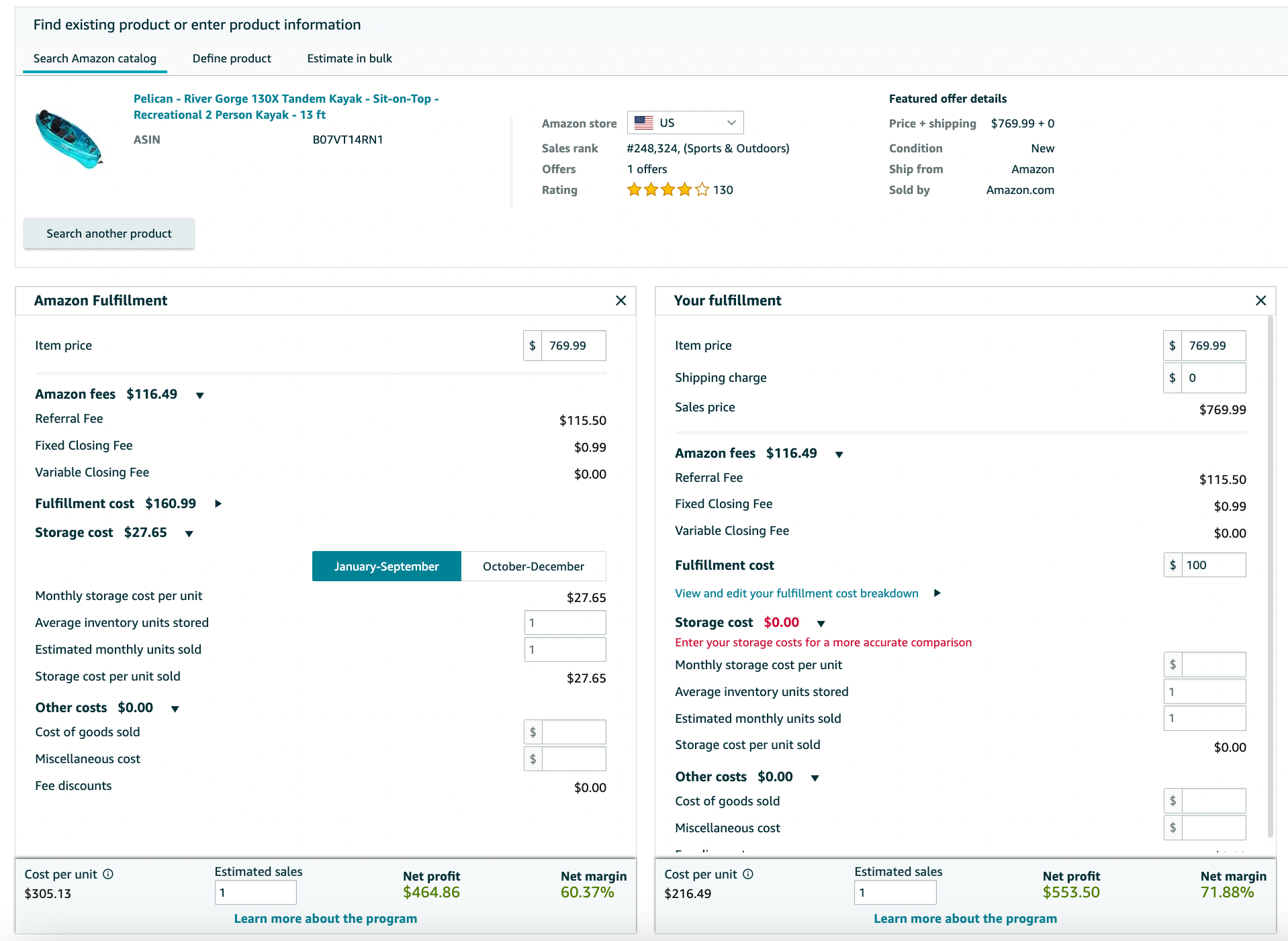
Before inputting the costs of goods, it will cost $305.13 in just Amazon fees and fulfillment fees if you use FBA. For the FBM example, I input the fulfillment cost as $100. If we can ship this product for that amount, we would profit roughly $100 more per unit — plus, save on monthly storage fees ($27.65 per unit) if a product this size was stored in FBA.
Make sure you calculate your products costs before deciding which fulfillment method works best.
2. Control of customer experience
FBM sellers store their own products, ship their own products, and handle all of the customer service for their Amazon sales.
On the other hand, sellers who use FBA use Amazon to store and ship their products and handle customer service on their behalf. FBA sellers rarely, if ever, speak with their customers. As such, FBM sellers have greater control over their customer’s experience.
If you want a more hands-off approach, especially when dealing with issues such as customer returns, FBA is the option for you.
3. Seller feedback
Amazon’s seller feedback system is a way for customers to communicate to Amazon their satisfaction with third party sellers and the resulting transactions.
Seller feedback has two components:
- Star rating: Like a product review, the shoppers can rate the seller’s performance on a scale of 1-5.
- Comments: In addition to the star rating, shoppers can leave comments on why they granted a certain rating to the seller.
Note that the seller rating is different from a product rating/review. The seller rating only covers the elements of the actual transaction such as shipping, whether or not the product matched its description on Amazon, and seller communication.
Because Amazon handles the majority of the steps involved in fulfilling FBA products, FBA sellers have less to worry about when it comes to seller feedback. In fact, if Amazon handles an FBA seller’s transaction and the seller receives negative feedback, the seller can request for the feedback to be removed.
Because FBM sellers have more control over their transactions, they are more susceptible to receiving negative seller feedback on Amazon. As such, FBM sellers must focus more on the condition of the products they send, the speed at which they send them, and how they handle all communications with sellers.
4. Turnover rates
A seller’s turnover rate is the speed in which they sell and restock inventory. An FBA seller’s turnover rate is important because Amazon tracks the length of time that inventory remains in these fulfillment centers.
The longer a product stays in a fulfillment center, the more storage fees the product accrues. Then, if products are stored in an Amazon fulfillment center for 180 days or longer, your inventory will start incurring an aged inventory surcharge (previously known as a long-term storage fee) and it will negatively affect your IPI score and ability to send more inventory to FBA.
READ MORE | How to Improve Your Amazon Inventory Performance Index Score
Therefore, sellers with products that have slower turnover rates should consider fulfilling their own products to avoid Amazon’s expensive storage fees.
5. Logistics
Picking, packing, and shipping one’s own products can be incredibly time consuming. Therefore, it’s recommended that a seller just starting with Amazon who does not already have their own fulfillment logistics in place start with Amazon FBA. That way, they can focus on the other important elements of building a business using Amazon.
For sellers who are adding Amazon as a new sales channel and already have logistics in place, they may still want to review whether or not Amazon FBA can save them money on fulfillment, especially if they sell and ship high-turnover products.
6. Fees
Amazon FBA sellers must pay FBA fees to ship goods via Amazon’s fulfillment network. FBA fees cover the costs to pick, pack, and ship the goods to the consumer. In a way, they are “shipping and handling expenses” that Amazon charges.
While Amazon FBM sellers do not have to pay FBA fees, they must still consider the expenses involved in handling and shipping their own products. This includes storage costs, labor costs, product packaging costs, and the actual cost to ship the product.
If these costs are greater than what the fees would be to let Amazon handle the fulfillment, the seller should consider using Amazon FBA.
7. Prime badge
Products that are fulfilled by Amazon will automatically be eligible for Prime shipping and will feature the famous Prime badge on your listing. There are over 200 million Amazon Prime members worldwide, and they’re looking for Prime products that will arrive to their house in 1-2 days.
Prime shipping eligibility is a huge advantage of using FBA over FBM. Though, there is a way to offer Prime shipping as an FBM seller with Seller-Fulfilled Prime.
READ MORE | Amazon Seller-Fulfilled Prime 2023 Guide
What are the key differences between FBA and FBM sellers?
Beyond the methods they use to fulfill their products, we discovered a few key differences between sellers who use FBA and those who use FBM — according to data from our 2023 State of the Seller Report.
Which is more profitable: Amazon FBA vs FBM?
FBM sellers have more sales and larger profit margins.
- 28% of FBM sellers earn more than $25,000 per month in revenue versus 12% of FBA sellers
- 35% of FBA sellers have profit margins over 20% versus 38% of FBM sellers
Which sellers get started selling faster: Amazon FBA vs FBM?
FBM sellers launched their Amazon businesses faster than FBA sellers.
- 42% of FBM sellers took less than two months to get started on Amazon versus 41% of FBA sellers
- 15% of FBM sellers realized a profit in fewer than three months versus 14% of FBA sellers
Which method requires less time to manage: Amazon FBA vs FBM?
FBA sellers spend a similar amount of time on their business as FBM sellers.
- 22% of FBM sellers spend 11-20 hours per week in the Amazon business versus 22% of FBA sellers
- Both FBM and FBA sellers attribute their success on Amazon to having time to commit to their businesses (53% and 52%, respectively)
What are the top product categories for FBA and FBM?
Fulfillment by Amazon
| Category | Percent |
| Home & Kitchen | 30% |
| Toys & Games | 15% |
| Sports & Outdoors | 14% |
| Health, Household & Baby Care | 16% |
| Beauty & Personal Care | 24% |
| Kitchen & Dining | 30% |
| Office Products | 12% |
| Tools & Home Improvement | 10% |
| Grocery & Gourmet Food | 11% |
| Garden & Outdoor | 11% |
Fulfillment by Merchant
| Category | Percent |
| Home & Kitchen | 25% |
| Health, Household & Baby Care | 18% |
| Toys & Games | 17% |
| Sports & Outdoors | 16% |
| Beauty & Personal Care | 26% |
| Tools & Home Improvement | 13% |
| Books | 16% |
| Office Products | 14% |
| Garden & Outdoor | 14% |
| Kitchen & Dining | 25% |
Other findings: Selling Amazon FBA vs FBM
FBA sellers are heavily focused on private label sales, while FBM sellers engage in other sales models at much higher rates.
- 55% of FBA sellers use the private label business model versus 44% of FBM sellers
- 35% of FBM sellers use the wholesale business model versus 26% of FBA sellers
FBM sellers tend to start with less start-up capital
- 17% of FBM sellers started with $2,501-$5,000 versus 18% of FBA sellers
- 46% of FBA sellers started with more than $5,000 versus 43% of FBM sellers
What fulfillment method do you use for your Amazon business?
We hope this article gives you a better understanding on the differences between FBA and FBM. Which fulfillment method do you use for your business? Let us know in the comments.
For more Amazon seller data, see Jungle Scout’s 2023 State of the Amazon Seller Report.
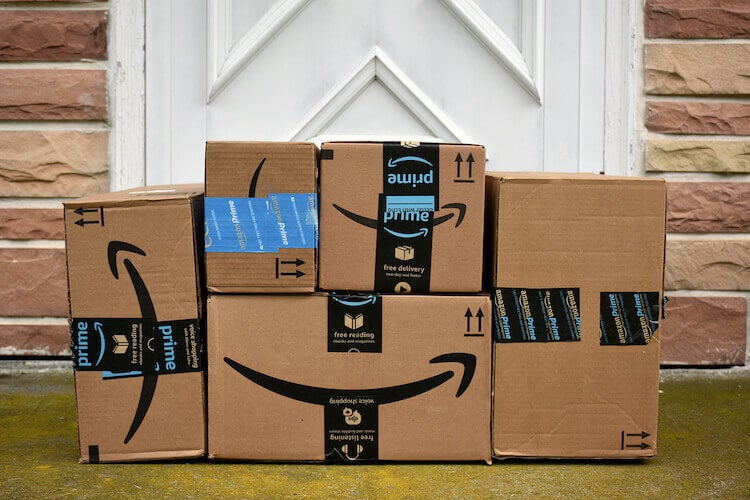
 54 Comments
54 Comments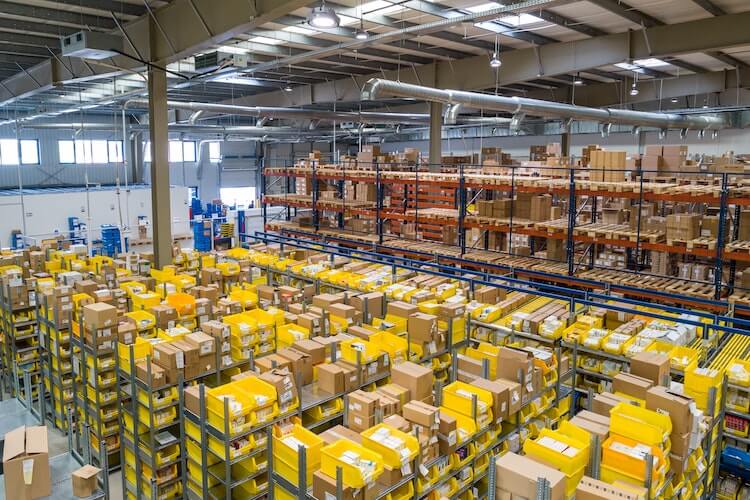
54 comments on “Amazon FBA vs FBM Comparison Guide”
Very helpful… Thank you. I was confused about choosing FBA or FBM, you’re Cleared With Example Thank you so much..
Excellent article. One thing I’m not clear on about FBM is available inventory… can the seller be out of stock, indicate so, and not be penalized for it, derated or discredited? On Ebay, you could just have 0 items available, and Ebay would just keep collecting listing fees, but nothing else. And the seller could add info to the listing to apprise customers of the situation and please check back etc.
Hi Phil,
If your FBM offer is out of stock, it will not be available on Amazon — It will be listed as inactive in your seller account. Though if you are out of stock for a while, your listing will lose ranking and may take some time to get that ranking back. When you add inventory, it will be live again on Amazon.
Hi Dave, thanks so much for the information. Such an exceptional article! I have a question, hopefully you can help me sort it out. I’m planning to sell a few products on Amazon. However, some of them isn’t small size (think of it similar to the size of a 24-pack of water but slightly smaller) and I’m thinking how to best benefit from fba vs fbm. What size of the product do you think above which I should definitely use fbm?
HI Nam,
That question isnt easy to answer without knowing the exact size, weight, and price of your item. If you sell it at a high enough price to profit after Amazon’s fee and storage fees, then do FBA. If it is more profitable to ship yourself, then do FBM. You can also do both and see which is more beneficial to your business.
it is a useful article, thanks
Hey Dave! We have been selling on Handmade for years now. However the shipping prices are soaring and we are beginning to lose our profit. We cannot get any answers from Amazon on how to up our shipping prices. HELP!
Lynne from Smoky Mountain Aquaponics.
Thanking you in advance
Hi Lynne,
In your Handmade account, you’re not able to go into Shipping settings and update the pricing? Alternatively, you can offer “free shipping” while upping the price of your products to be sure you can cover the increased costs to ship.
thank you Dave…very helpful information here …in great detail too..appreciate your hard work in putting this together
Hello Brian, me and my wife were planning to have two seperate fba stores, but we found an old article that says Amazon does not allow it. Is this true? If true how can we create multiple seller fba stores, seller stores so i can sell what i want and she can sell what she wants?
Hi Jacques,
If you are both in the same household, I would advise against opening separate seller accounts. You would need to get approval from Amazon to open a second seller account. Open one account then contact seller support with your case about opening a second account and explain your situation.
Hey Dave, Great article and comparison. I appreciate your dedicated perspective. So for a start up , college student potentially selling small items, would you recommend FBM and moving to an FBA with an expected increase in product turnover overtime?
Hi Ariana,
If you are just starting out selling on Amazon with a few items, you can test the market fulfilling via FBM and move on to FBA. Though with FBA, you can send in as little or as much as you want to test as well.
On your Amazon listing, you can offer both FBM and FBA fulfillment at the same time.
Dave, thanks a lot for putting all this together!! Very detailed, broken to the smallest information and am thoroughly satisfied reading up… you’ve made it all sound simple.
Rea;;y very informative & comprehensive detail of both models (FBA VS FMB) models.
Appreciate your experience & writing article.
This is Asadullah from Afghanistan, currently a student at one of the universities in Saudi Arabia. I wanna start business in Amazon. Anyone please tell me what is better for me. FBA or FBM.
Hi Asadullah,
Which marketplace will you be selling on? In the US? FBA would be best so all of your products will already be in the country you are selling in.
Thanks for the info.
We sometimes have a hard time with keeping FBA stocked with our product. Is there any negativity in having the same products on FBA and FBM (so just in case we run out of FBA product the FBM will show for sale still).
We always have stock in house, but send product in bulk to FBA to use their services of sending our product.
My question is there anything negative to have FBA products at $4.99 and FBM products at $5.10. A higher price on FBM because if there is FBA stock we would like that product to be sold first.
Hi Ty,
Yes, you can have both an FBA and FBM Sku live at the same time. There is nothing negative with doing this. This is a great idea so your listing never goes out of stock.
Content us useful. Who will do labelling in FBA & FBM
You can have Amazon label your FBA products but any products shipped through FBM will need to be done by you or another service provider.
Hi there
I live in Afghanistan and i would like to start business with Amazon and I don’t know which one is better FBA OR FBM.
Thanks i advance
Hi,
I would suggest starting with FBA as you do not need to worry about shipping the items to your customers.
Great article! wonderful! I have some questions.
First, about patent and trademark. How do I know the product I found on amazon or Alibaba not patented and trademarked?
Second, about trademark for PL. Does amazon request the trademark for PL? Do I have to apply for the trademark for my brand and logo before my first order manufacture to legally sell?
One more, PL will be created a new listing, will other sellers will resell same product under my listing? How to prevent it?
Thanks
Hi Mei,
Thanks for reading! You can check to see if a product has a patent by doing a patent search on the USPTO website. There are some good videos on Youtube that explain how to do so.
You do not need a trademark to begin selling your product on Amazon. You only need a trademark if you are going to enroll in Amazon Brand Registry.
Technically, other sellers will be able to list their products on your listing. It may happen but it is rare if your product is clearly branded. By placing your logo on your product and product packaging will help prevent other sellers from going on your listing.
Brand Registry can also protect you from that.
– Brian
If I decide to use the FBM, will I have to pay any fees before I sell or I will only pay a fee when customers start making orders?
Hi Edgar,
That depends on if you have a professional or individual seller account. The pro account is $39.99/month while the individual is free.
In terms of selling fees, you pay those once a customer purchases your product. Amazon will pay you the difference.
I sell books mainly, what about fba vs. fbm with prime? I have too much inventory at fba currently, and am considering shipping fbm with prime in the future. It looks like fbm without prime is very competitive
Thanks
Hi Jeff,
If you have access to Seller Fulfilled Prime, that would be another good option to test out for your book sales.
Good article Dave,
We errred when we tried to sell catons of coffee cups on AMazon USA FBA. Storage killed us during Covid.
We have now brought the cups ttto Auastralia (home) and we try FBM here.
Would like to join your group as we now get back into Amazon.
Do you have any kowledge of how Amazon AU is going? How are they tracking against Ebay?
Cheers
John
Great article. Thank you! I noticed that you refer to the 2021 state of the seller report in the first paragraph, but this points to the 2020 report from last year. Any chance that the new data is ready to be published yet?
Hi Adam,
Thanks for pointing that out! I just corrected that and added the current seller report link.
Brian
Very nice comparison post here, I am trying to build and scale my Private label business this year, my shop was establish at first in Romania, but as Amazon is only in the western countries of Europe, I’m planning to sell my backpacks and sunglasses to Amazon UK FBA . Costs are a bit higher, but I will give it a shot for FBA instead FBM . Let’s see how it works.
Good luck!
Very helpful
Hi Brian,
What an excellent article. You took such patience to lay our every detail.
I have my own 3PL and would like to start selling thru Amazon too to supplement my website sales.
What options are there for a FBM entity. Do you have to participate in the FBM Prime considering there is a few hoops to jump through including a trial period, etc. Do most FBM sales go through the FBM Prime channel? Can you participate as a FBM and ship FedEx Ground and just mirror what you offer for your website business.
Do you know the fee structures?
Many thanks Brian.
Hi Adam,
You can use FBM without doing Seller-Fulfilled Prime. You will need to start fulfilling your own orders through FBM before even being eligible for Prime. If you ship your products to an Amazon warehouse, then your products are automatically Prime through FBA. You can do both if you choose.
We have a few posts on the Amazon fees that you can check out!
Great article! I just started last month and sent my first shipment to AZ for FBA. My 2nd shipment is on its way now also. I am selling some, but I’m getting concerned with how long 2 of my shipments are just sitting in Delivered but haven’t been Processed. I’ve seen FB groups say I need to learn FBM for 2020, because all AZ warehouses are so backed up. Don’t know where to begin with FBM. Your thoughts (FBA/FBM) for this fall/2020? Any easy guidance for FBM and carriers that are dependable instead of USPS? FBA shipments are being split into several because I thought that would save, but it’s getting expensive when they divide them to 4-5 different warehouses. Thank you for any tips!
Hi Jan,
Yes, FBA warehouses are becoming backed up and may take longer to receive your shipments.
You can create an FBM SKU under the same ASIN you are using for FBA. So basically you’ll have one offer for FBA and one offer for FBM. When fulfilling FBM orders, you are able to purchase shipping right in seller central and usually have the option from USPS, UPS, and Fedex.
Keep some inventory on hand at your house/business so you can quickly ship out any orders. Make sure you have the proper supplies such as shipping boxes, labels, tape, bubble wrap etc.
It is fairly simple once you ship a few orders. When you receive an FBM order, go into seller central to buy the label and confirm shipping. Once you order is marked as shipped is when you will see the payment in your balance. I hope this helps!
Thank you so much for Information.
Sir I want to open amazon seller account what I do first.
Please guide me.
Hi Sayyed,
Go to Amazon seller central here: https://sellercentral.amazon.com/
Follow the steps throughout their sign up process and you will be good to go.
Great article…learned quite a bit – thank you!
? on amazon advertising….we are a small brand and FBM. Dabbling in paying for amazon ads…trying manual targeting and automatic targeting…..sales are barely there.
Do those brands who are FBA and advertise…get better results because of their status as FBA? What are other FBM sellers doing with advertising that is bringing in sales consistently? Thus far all the monies we’ve spent to advertise on amazon…haven’t proven to be worthy of the spend.
Hi Barbara,
Advertising an FBA listing has more of a chance of converting than an FBM listing because of Prime.
Have you tried using FBA for your items?
Question for you: in your example of selling a garlic press as FBA: $7.99 – ($3.64 + $1.20 + $1.50 = $6.34) = $1.65, don’t you have to also factor in the shipping cost to send your product to Amazon so they can handle fulfillment? Would I also have to pay a monthly FBA storage fee if my product takes a few months to sell? Lastly, I guess I would have to pay Individual per-item fee or subscription fee?
So for your example again, would I be correct to state $7.99 -(shipping cost to send to Amazon warehouse + per item fee/subscription fee + storage fee + FBA of $3.64 + $1.20 + $1.50)?
Thank you for your time to clear this up for me!
Hi George,
Yes, you do have to factor in the cost to ship into Amazon’s warehouses. Though they have great shipping rates so the cost is reasonable. Typically around 25-50 cents a pound depending on where it is going.
Yes, you do have to pay monthly storage fees. Check out this post to get a better understanding of the storage fees: https://www.junglescout.com/blog/amazon-fba-fees/
If you have the individual account, you will pay the 99 cent per-item fee and if you have a pro account, you will pay $39.99 per month.
Dave,
Great article and breakdown. WOW! So much information especially for the beginner. I’ve seen other adds and recordings that want to charge $6K to get you started. But, I am believing once I fully understand the process I can get started on my own. Am I kidding myself here?
Hi Robert,
Thanks for the comment! No, definitely not! You can absolutely get started on your own. There are a lot of great, free resources here on Jungle Scout and on our Youtube.
Take the time to learn more and then jump right in!
Brian
You should said:
“31% of FBM sellers are concerned that Amazon sells products that compete directly with their own versus 27% of FBA sellers”
Instead of:
“31% of FBM sellers are concerned that Amazon sells products that compete directly with their own versus 27% of FBM sellers”
Thanks for the feedback!
This is a great blog. Just I got cleared myself about FBM and FBA reasons.
Thanks.
First of all, this article is excellent. I’m still uncertain about what makes more sense for me. I’ve kept away from “storage fees” with FBA by shipping small amounts when necessary, but by doing so I incur lots of shipping to AMZ costs. AMZ shipping costs are probably way lower than anyone else can do but FBM people don’t have to pay that FBA fee, so that might be a wash. Mr. Hamrick mentions that shipping products that are “heavy” might be best for FBM. “Heavy” is kind of relative. In my case, one of the reasons beyond trust that people order my product from AMZ instead of from my Shopify website is because with AMZ, they don’t pay to return it, whereas i ask that they do when ordered from the website. I have the time to ship, so that’s no deciding factor. I have a new product category launching near the end of the year and am trying to decide which way to go.
Great article Brian. Thank you for the detail information on comparisons for FBA vs FBM.
Do you have an article on selling other people’s product vs selling your products on Amazon?
Thanks,
Ida
Hi Ida,
Yes, we have articles regarding retail arbitrage as well as selling wholesale on Amazon.
Good job explaining the pros and cons of both FBA and FBM